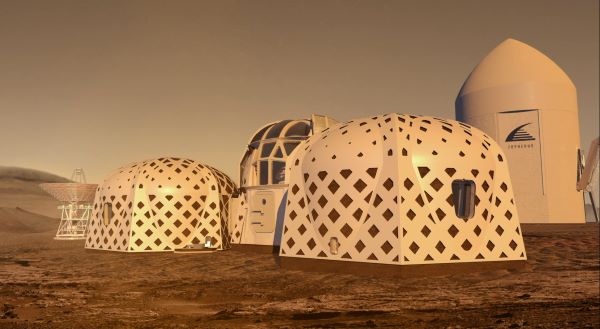NASA has announced the winners of its 3D Printing Centennial Challenge to design architecture for Mars.
The international competition sought perspectives from outside the traditional aerospace industry to explore how a human habitat could be designed, and delivered, on Mars using autonomous 3D printing technologies.
Australian design team, HASSELL, was one of 10 finalists in the previous round. However, the team did not manage to make it into the top three.
NASA has chosen New York design team SEArch+ and Apis Cor as the winner for “Mars X House”. The unique twisted tower design would require the structures to be built on Mars by AI-powered robots, according to the design team. Astronauts would live and work in the structures, which include holes to allow natural light to filter in.

Image credit: SEArch+ and Apis Cor
The winning design was regarded highly due to its stability, durability and use of autonomous construction using local Martian materials.
Second place was awarded to Team Zoperhous from Arkansas, who suggested their modular structures could be printed by an autonomous rover.
 Image credit: Team Zoperhous
Image credit: Team Zoperhous
Third place was awarded to Connecticut team Mars Incubator, a team of artists and engineers whose modular design comprised four distinct spaces, one of which would be for growing plants.
 Image credit: Mars Incubator
Image credit: Mars Incubator
The three winning teams evenly split a $100,000 prize ahead of the competition finals next month.
In the final stage of the competition, teams will be asked to print small-scale versions of their designs in front of a live audience. This will take place on 1-4 May in Illinois, with the winner receiving $800,000.

